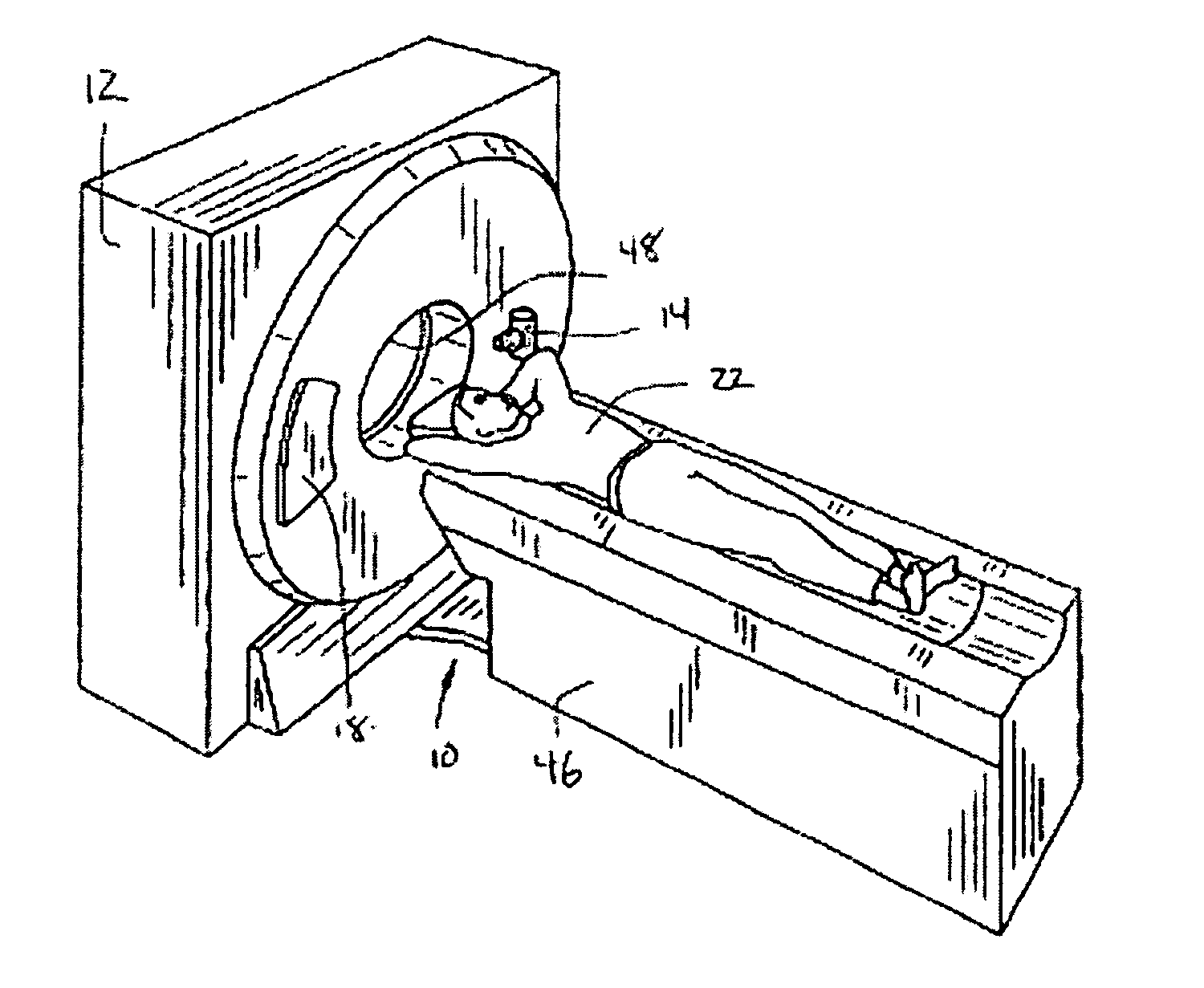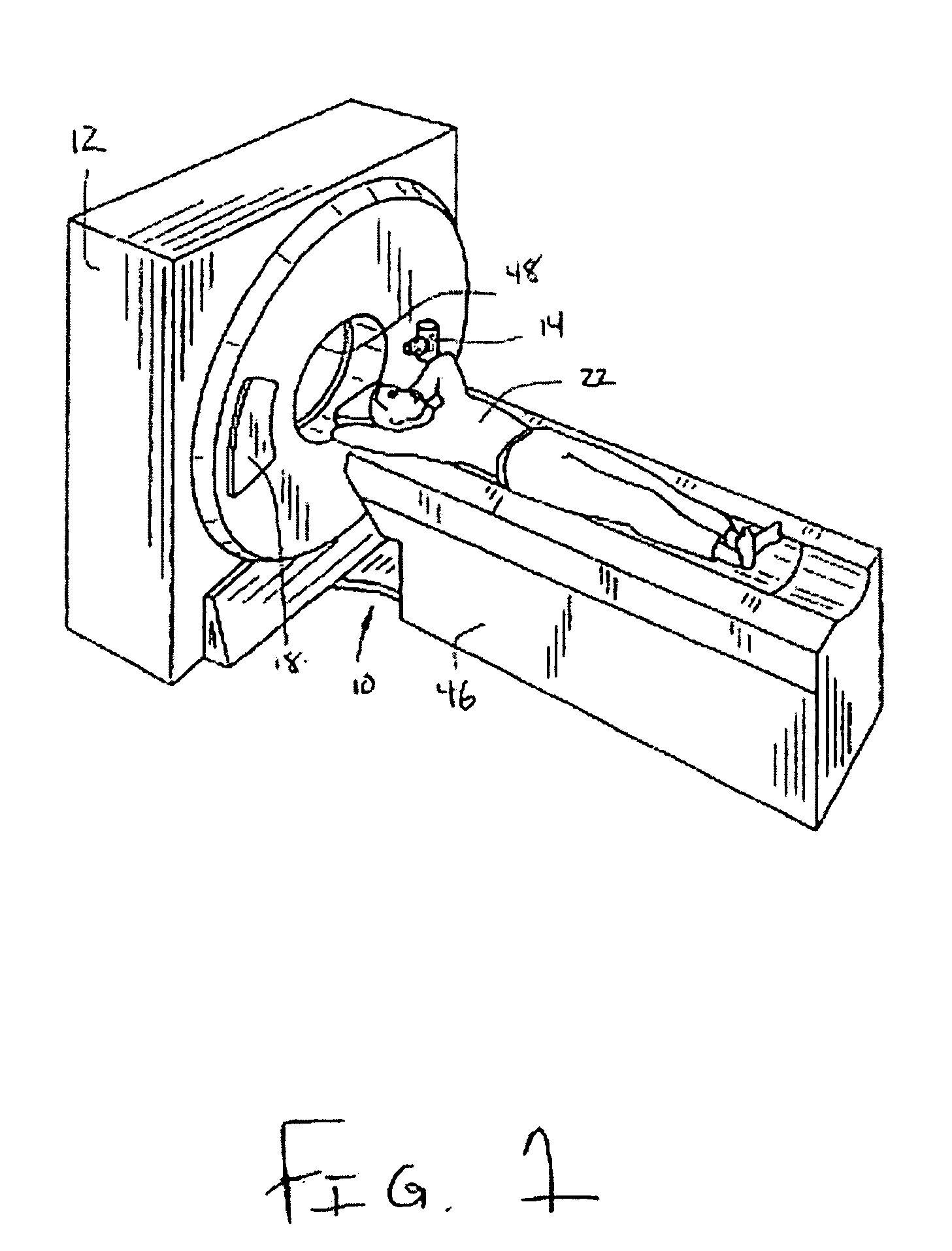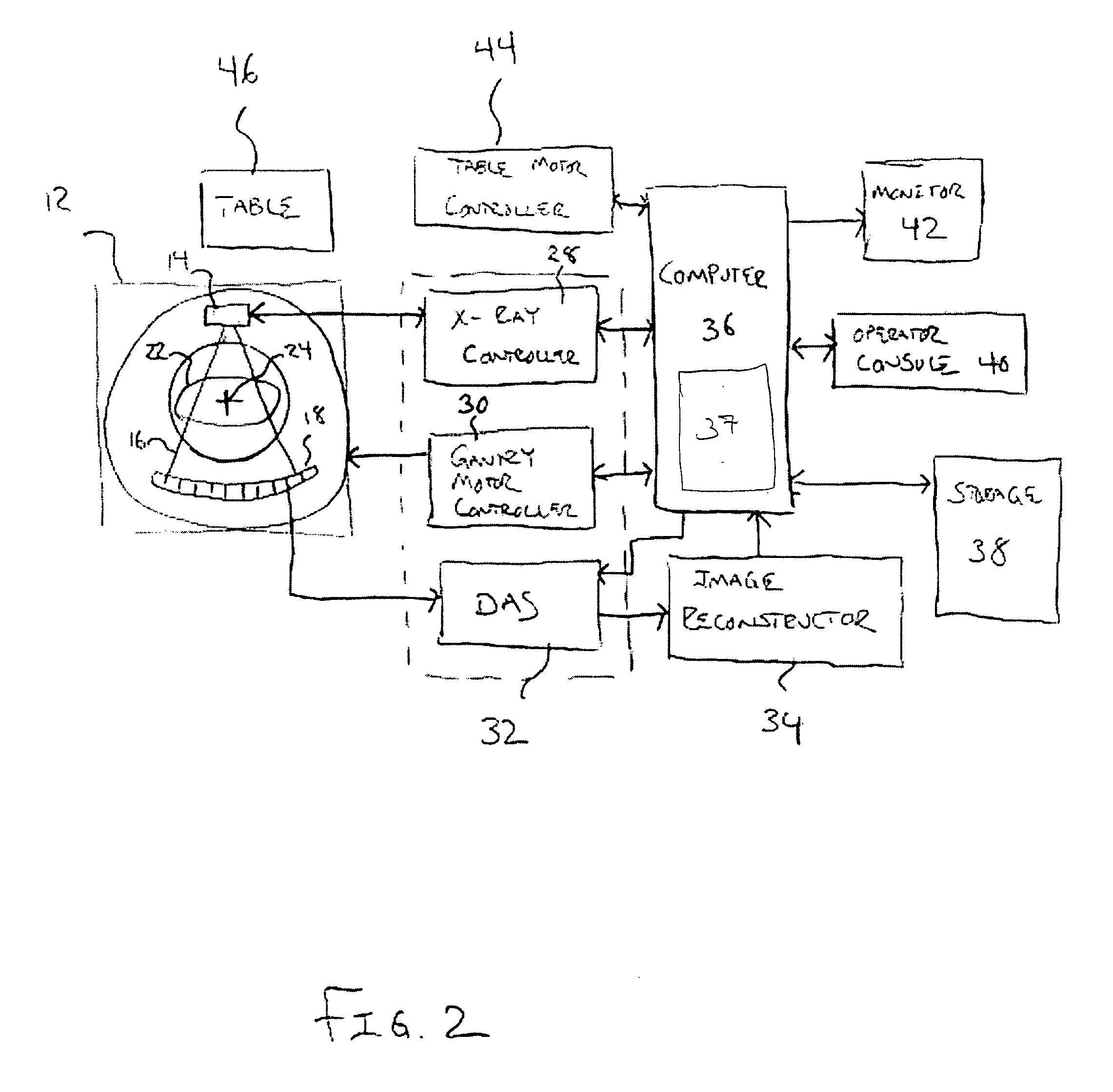Systems and methods for qualifying symmetry to evaluate medical images
a technology of medical images and systems, applied in the field of systems and methods for qualifying symmetry to evaluate medical images, can solve the problems of adverse effects, incorrect patient diagnosis, complex image evaluation process, etc., and achieve the effect of better and more stable analysis
- Summary
- Abstract
- Description
- Claims
- Application Information
AI Technical Summary
Benefits of technology
Problems solved by technology
Method used
Image
Examples
Embodiment Construction
[0036] Although the present invention is described below in connection with a CT scanning system, it will be understood that the principles and novel concepts described herein may be used with any other magnetic or radiation-based scanning system such as MRI or PET.
[0037] Referring to FIGS. 1 and 2, a CT imaging system 10 is shown as including a gantry 12. Gantry 12 has an x-ray source 14 that projects a beam of x-rays 16 toward a detector array 18 on the opposite side of gantry 12. Detector array 18 is formed by detector elements 20 that together sense the projected x-rays that pass through an object, such as a medical patient 22. Each detector element 20 produces an electrical signal that represents the intensity of an incident x-ray beam and thus the attenuation of the beam as it passes through object or patient 22. During a scan to acquire x-ray projection data, gantry 12 and the components mounted thereon rotate about a center of rotation 24.
[0038] As shown in FIG. 2, detecto...
PUM
 Login to View More
Login to View More Abstract
Description
Claims
Application Information
 Login to View More
Login to View More - R&D
- Intellectual Property
- Life Sciences
- Materials
- Tech Scout
- Unparalleled Data Quality
- Higher Quality Content
- 60% Fewer Hallucinations
Browse by: Latest US Patents, China's latest patents, Technical Efficacy Thesaurus, Application Domain, Technology Topic, Popular Technical Reports.
© 2025 PatSnap. All rights reserved.Legal|Privacy policy|Modern Slavery Act Transparency Statement|Sitemap|About US| Contact US: help@patsnap.com



